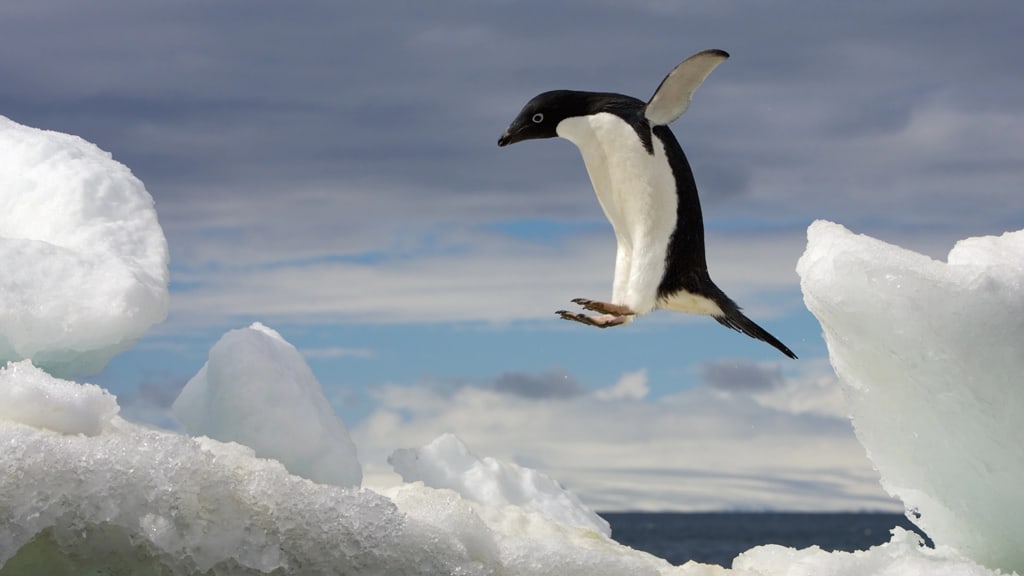Adélie penguins-Most beautiful penguin in the world
Adélie penguins-Most beautiful penguin in the world

This includes species such as emperor, Gentoo, Adelie, and chinstrap, which may have different partners from year to year. Of the 18 different penguin species, only two — Adélie and the emperor penguin — have actually made Antarctica their home. There are about 18 species of penguins on the planet (the exact number is being discussed), which live from Antarctica to the far north of the equator, but only 8 species of penguins can be found in and around the icy waters of Antarctica. Penguins can be found in colonies of the Antarctic continent and on sub-Antarctic islands.
Found along the Antarctic coastline, this species is perhaps the most recognizable penguin to appear in several films such as March of the Penguins and Happy Feet. This species, which congregates on icebergs and small dry islands in the sub-Antarctic region, is considered the hardiest and aggressive of all penguin species. The gentoo penguin, most closely related to Adele and the chinstrap, is the third-largest penguin, at about 35 inches long. The Galapagos penguin is the only penguin species entirely native to the Northern Hemisphere. They are named after the archipelago in which they live.
These penguins nest almost exclusively on Antarctic sea ice, making them the only birds to have never set foot on land. Due to the harsh and cold climate of Antarctica, penguins mainly inhabit the rocky coastlines and islands around Antarctica. In Antarctica itself, they spend only part of the year in the northern part of the Antarctic Peninsula.
It is one of two penguin species found on the Antarctic mainland, the other being the emperor penguin, which is quite large. Ada(c) recumbent penguins (Pygoscelis Adelia) are common along the Antarctic coast, where they have the southernmost distribution of all seabirds, along with emperor penguins, south polar skua, Wilson's petrels, snow petrels, and Antarctic petrels. Ada(c) lie penguins are found only in Antarctica, where they breed on the coasts of Antarctica and surrounding islands. Adélie penguins are one of the most abundant species in Antarctica, and populations are stable or increasing throughout much of their range.
In 2010, they were officially listed as an endangered species by the Endangered Species Act. There are currently only 3,750 breeding pairs, leading to their listing as an endangered species.
Gentoo penguins were generally treated as a single species, with smaller subspecies found in Antarctica (Pygoscelis Papua Galsworthy) and sub-Antarctic islands (Pygoscelis Papua Papua) such as the Marion Islands in South Africa. It was a large subspecies. Adélie penguins are one of three bristle-tailed penguins, along with chinstrap and gentoo penguins. The Adélie penguin (Pygoscelis adeliae) is a species of penguin native to Antarctica. The Adélie penguin (Pygoscelis adeliae) is a common penguin species along the entire coast of the Antarctic continent, its only habitat.
The trap penguin gets its name from its main breeding site, the trap islands, a small crested penguin known to live in fairly large colonies.
Little White Penguins Penguins live in just a few small colonies on small islands off the east coast of New Zealand's South Island. They colonize large rocky areas where other bird species are absent, but they can occasionally be seen nesting near southern rockhopper penguins or even Salvin's albatrosses. During the spring breeding season (October), they migrate to the rocky coast of Antarctica, where they live in large communities called colonies. During the cold winter months, they move north to sea ice to take advantage of abundant food sources, and south in summer, where they congregate on non-freezing beaches or reefs to breed...
In the Southern Ocean, they feed on crustaceans, fish, and squid, with krill making up a significant portion of their diet. Like all Pygoscelis penguins, Adélie feeds primarily on Antarctic krill but has also been known to eat Antarctic silverfish and glacial squid. Adélie penguins are effective hunters and can eat up to 2 kg of food in a day.
So, with the increase of global warming in Antarctica, it is now a great treat for the Adélie penguins. These penguins probably have good taste because they are hunted by both leopard seals and killer whales. This is because their main food source is Antarctic krill, which still require sea ice to breed successfully. Less competition from these predators has resulted in a surplus of krill, which penguins now use as an easy food source.
According to satellite analysis of coastal areas bleached from guano to reddish-brown in 2014, 3.79 million breeding pairs of Adélie penguins were found in 251 breeding colonies [13], a 53% increase from the census completed 20 years earlier. Adélie penguins from the Ross Sea region of Antarctica migrate an average of about 13,000 kilometers (8,100 mi) each year, following the sun from their breeding colonies to their wintering grounds and back.
Rock jumping penguins are found throughout the sub-Antarctic region, the southern tip of South America, and islands in the southern Indian Ocean, but the Antarctic continent itself is too cold for them. At least two Megadyptus penguins have become extinct, but only the yellow-eyed penguin still roams the Earth. The yellow-eyed penguin (Megadyptes antipodes) is the only living species in the genus Megadyptes, a truly extraordinary bird found only in southeastern New Zealand. The world's smallest penguin, called Eudyptula minor, is a bird native to New Zealand and South Australia.
Penguins are some of the cutest birds out there, and while Adélie penguins are no exception, they can also be cute because of their small size. With their small curious eyes, short stature (up to 70 cm or 2.2 ft, they are the smallest species of penguin in Antarctica), and steadfast gait, they have character and are very interesting to watch. The Adélie penguin (Pygoscelis adeliae) is by far the most beloved species for many, but did you know that these Antarctic predators are some of the most ferocious predators in the region?
Pasta penguins (Eudyptes Chrysolophus) are the most abundant species in the world, with approximately 24 million penguins in 260 colonies in South America, Australia, Antarctica, and the Marion Islands, more than all other penguins combined. The orange-beaked pasta penguin, with red eyes and large bright yellow streaks resembling the eyebrows of a mad professor, is one of the most striking penguin species in Antarctica. Pasta penguins inhabit sub-Antarctic islands that extend from the southern tip of South America to the Cape Horn coast in Africa.
Adult male penguins are called roosters, and adult females are called hens. While on land a group of them will be called a waddle, and in water - a raft. ADA (c) Lying penguins build their nests out of stones stacked together.
About the Creator
Enjoyed the story? Support the Creator.
Subscribe for free to receive all their stories in your feed. You could also pledge your support or give them a one-off tip, letting them know you appreciate their work.





Comments
There are no comments for this story
Be the first to respond and start the conversation.